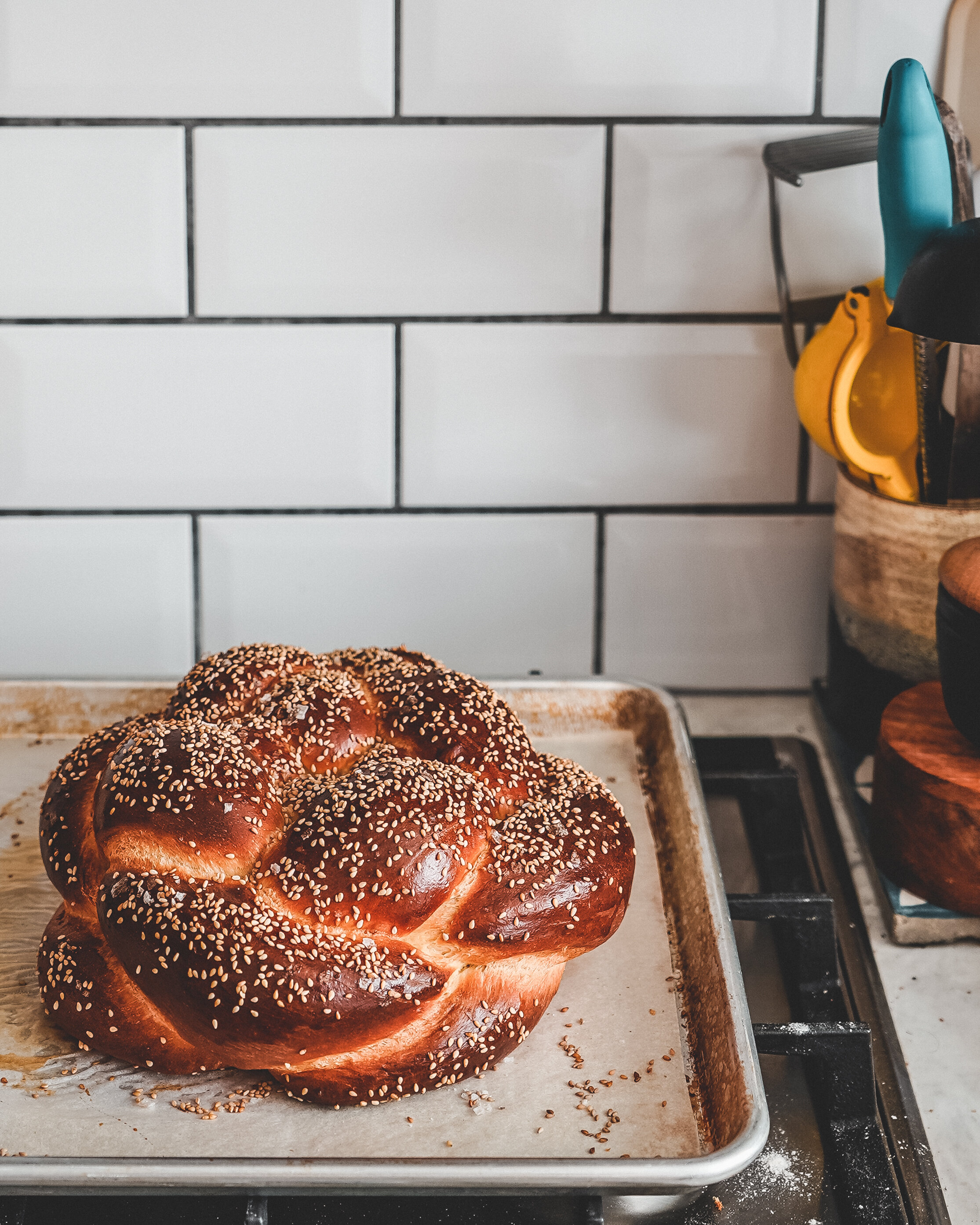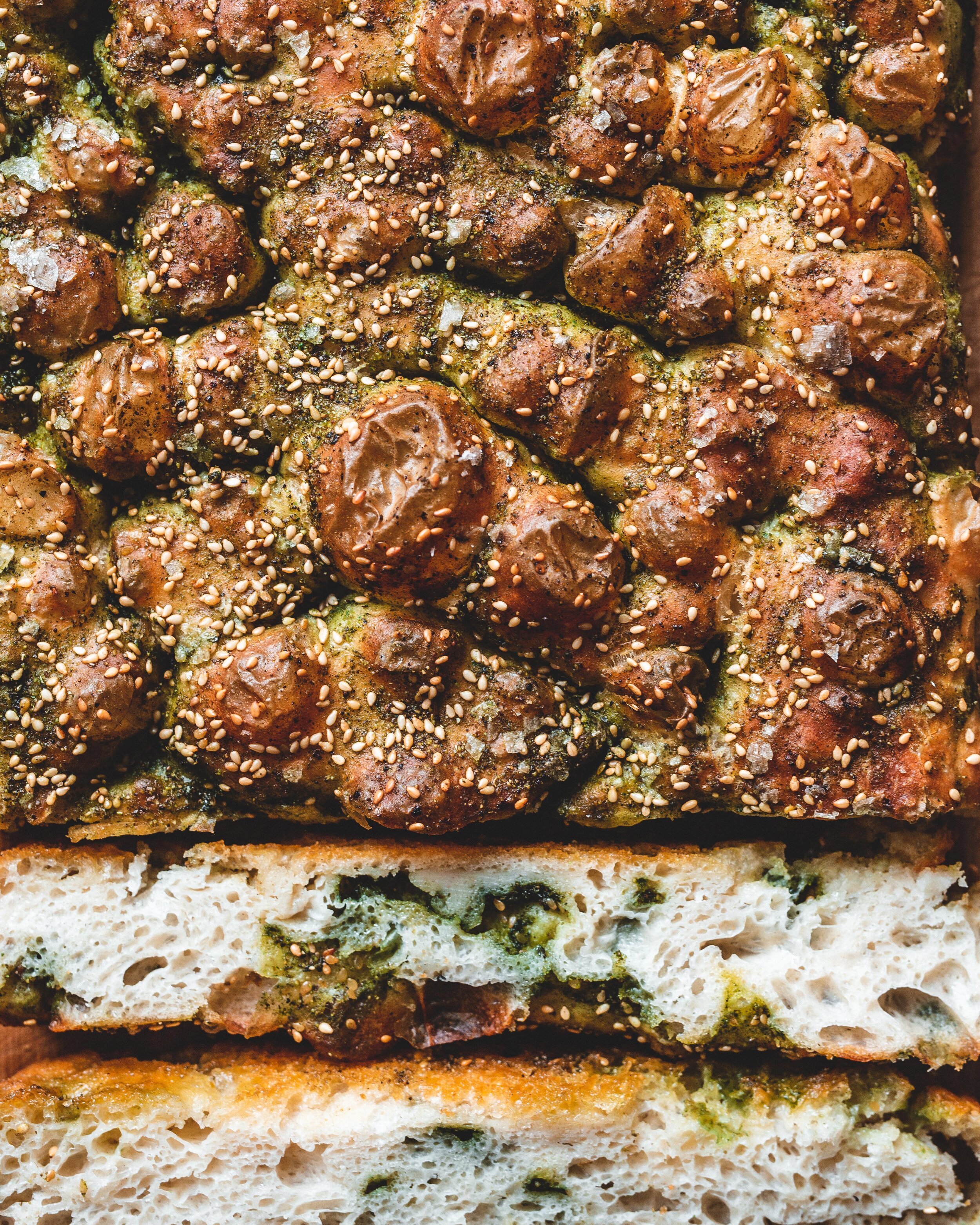Simit is a quintessentially Turkish recipe, sold everywhere, it is a very popular bread, commonly served at breakfast or as a snack. The shaped bread is coated with a pomegranate molasses slurry before being coated generously in sesame seeds. The shaping of the bread may look daunting but the process is not as complicated than you may think. My favourite way to serve it is alongside another classic dish, Menemen, a Turkish style scrambled egg, its the perfect breakfast dish.
Simit
Makes 6
500g strong white bread flour
7g fast action dried yeast
15g fine sea salt
20g caster sugar
30ml olive oil
280ml whole milk
To Coat
75ml pomegranate molasses
25ml water
1/2 tbsp plain flour
100g sesame seeds
To make the dough place the flour, yeast, salt and sugar into the bowl of a stand mixer, fitted with the dough hook, and mix briefly to combine. Pour in the oil and whole milk and mix to form a shaggy dough. Once combined continue kneading the dough on a low/medium speed until the dough is smooth and elastic. This dough is relatively low hydration so if your stand mixer struggles with stiffer doughs you may want to knead this by hand, it should take about 15 minutes until the dough is ready. Form the dough into a ball and place into a lightly oiled bowl. Cover and set aside for 60-90 minutes or until doubled in size.
Whilst the dough is rising prep the topping, whisk together the molasses, water and flour. Place the sesame seeds into a shallow tray.
Divide the dough into 12 equal sized pieces and form each into a ball. Forming the dough into balls will make the dough tight so cover them with a damp kitchen towel and leave to rest for 15-20 minutes. Working with two balls of dough at a time, roll each piece of dough into long ropes, roughly 45-50cm long. Twist the two ropes of dough together, then form in a circle and press the ends together. You can lightly moisten the ends with water to ensure the ends stick together, but with enough pressure you shouldn’t need it. Carefully dip the simit into the molasses mixture, coating both sides, then transfer to the sesame seeds, coating both sides entirely with the seeds.
Place the simit onto one of two large parchment lined baking trays. Repeat with the remaining dough. Cover the trays lightly with kitchen towels or clingfilm and set aside for 45 minutes or until puffy and risen but not yet doubled in size. Whilst the bread is rising preheat the oven to 210ºC (190ºC Fan). Once risen bake in the preheated oven for about 15-18 minutes or until a deep golden brown. Remove and set aside to cool.
Kept covered the Simit will keep for 2 days but can also be frozen for up to a month.









